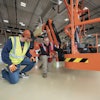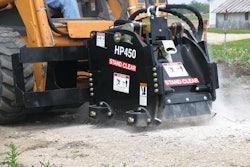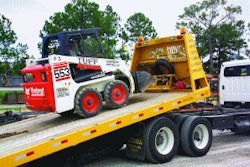Over the past couple months, we reintroduced some common pricing concepts to use when bidding jobs. I guess you could say we were teaching both old and new dogs old tricks. In any case, it was either a review of costing and bidding work or an introduction to the concepts for those who had not applied them previously.
I don’t think anyone can doubt that ideas and concepts are changing more rapidly in the current world we live in. You can see it every day on daily news programs, or shows such as Shark Tank or the DIY shows where they either build or rehab properties. Now, I’m not a tradesman but I can still appreciate what I see on This Old House, including how the building process has changed and become more efficient over the years that I’ve watched the program.
Let’s face it, disruptive change is happening in every economic sector, and yours is no different. If you’re doing things the same ways you were five years ago, chances are you’re behind the eight ball. If you run a small shop, you can test yourself along these lines. If you have a larger organization, I suggest you ask your project leaders what has changed the way they do business and how they react to customer needs. If the answers you receive are “not much,” “really nothing” or “there is no reason to change anything,” I suggest you spend some time to discuss:
- what changes customers are demanding and expecting, and are we meeting them;
- what are we doing to become more cost effective through the use of better planning and more efficient methods;
- are we taking advantage of what our accounting system can provide for us, and are all project leaders fully conversed in all the information the system can provide.
You can probably guess what the outcome will be if you are not receiving positive input from your employees. I suspect it increases your risk of not getting the better jobs because your costs or methods are not up to date.
The ROI Behind Technology
A good example of what I’m talking about was discussed at a recent Associated Equipment Distributors Forum. One section of the program covered telematics, the increasing rental market and the use of unmanned aircraft. Now please do not say “What has that to do with my construction business?” In short, a lot!
The telematics presentation pointed out the increased use of this technology, the cost and the return. The prices have come down, and the systems now available can save downtime and costs that more than pay for the investment. And to add to the benefits, consider that equipment dealers, contractors and rental companies can all run these programs for their own equipment, as well as for non-owned equipment. I find this to be an opportunity for dealers and their customers to work more closely to reduce equipment operating costs.
Equipment rental is estimated to increase 34% between now and the end of 2018, from $38 billion to $51 billion in rental revenue generated. Rental provides a service to utilize specialty equipment or obtain equipment you don’t have that can make your job run smoother and faster.
There was even a presentation on how unmanned aircraft can be used by contractors to monitor jobsites from a new perspective. Again, it’s a way to stay ahead of the game for not a lot of cost.
If you are applying these methods, I suspect you are preparing competitive bids for the work you are seeking. If you’re not using these methods, I suspect your costs will be on the high side for the job. As you know, you can always discount your work, but where does that leave you in the long run? Not in a good place.
Stay Educated
To put my money where my mouth is I signed up for the Association of Equipment Management Professionals telematics symposium (www.aemp.org) to learn more about telematics, how they work and how much they cost to implement. After the symposium, I planned to take the test to become a Certified Equipment Manager so I can pass on this knowledge to contractors, dealers and rental companies. It will also look good on the bio — CPA, MBA, CEM — what do you think?
So the message this month is every contractor out there has to have a continuous learning program to stay with the competition, with the word “continuous” being the key point in that statement.
Dig out your pencils, backpack and calculator and back to school you go!




















